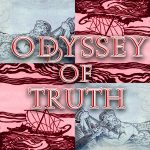The Role Consciousness Plays In Creation
Says Shiva in an ancient Puranic story, “Adyashakti (Primordial energy) is incomplete without me, and I am like a corpse without her.” Shiva also goes by many other names: Paratpara Shiva (Beyond attributes-Gunas), Ardhanareshwar (Half male-half female), Sarvavyapi (He is everywhere), Antartyami (Inner witness), and Trikaldarshi (Omniscient).
After a decade-long research into unraveling the meaning of nothing and the nature of ultimate reality that included interactions with some of the best brains in physics, including Stephen Hawking and John A. Wheeler, Amanda Gefter released her finding in the 2014 path breaking book, “Trespassing on Einstein’s Lawn”, finally concluding that ultimately, nothing is real. That is, on one side of the energy phase of the big bang event, there is this ever-expanding universe, but, on the other side, there is absolutely nothing, a void.
Over the years, theoretical physicists have developed a number of theories like relativity theory, quantum field theory, string theory, loop quantum gravity, twistor theory, and constructor theory, but none of them can explain creation, that is, how nothing can transform into something, the energy phase of the big bang event.
Any theory of creation must necessarily assume that it has an a priori existence, and therein lies a conundrum. Such a theory would be a logical contradiction since the said theory would have to explain its own creation from nothing. A theory is just another thing among things, and one can never explain the creation of the theory from nothing if you have to assume that the theory exists before you can explain anything else. There can never be a theory that explains the creation of everything if the theory is included among those things.
The other problem theoretical physicists are facing is that a vast majority of them are reluctant to acknowledge the role of consciousness in creation.
The basic fact of existence is that whatever appears to exist, only exists from the point of view of the observer that observes it. If the observer doesn’t observe something, then nothing appears to exist from that particular point of view.
This simple fact of existence is not some weird metaphysical speculation. It is everyone’s common experience. When you fall into a deep sleep, everything disappears from existence from your own point of view and you perceive nothing. When you perceive nothing, nothing appears to exist from your own point of view.
Physicists complicate this basic fact of existence by calling it the measurement problem, but the simple fact of existence is that an observer has to observe something before something can appear to exist from that particular point of view.
The simplest way to explain creation is to begin with the assumption that consciousness is what exists before anything else is created and before anything is perceived. A logical corollary to this assumption is that consciousness is what creates all things and perceives all things, but in-and-of-itself, consciousness is not a thing.
If we start with this simple assumption, then, we really don’t need a “theory of creation”. Instead, we only need a “mechanism of creation” which explains how consciousness, which in-and-of-itself is not a thing, is able to create all the things that it then perceives. Theoretical physics has already discovered this mechanism, which is called the holographic principle of quantum gravity. The holographic principle is not a theory. It is a mechanism, and at the most fundamental level, it is a mechanism of creation. It explains how all things are created from the ultimate nothingness of consciousness that exists before anything is created, appears to come into existence, and is perceived.
To understand how this mechanism of creation works, we have to begin with the idea of an observer. The simplest way to understand the observer is as a point of view. The observer is a point of perceiving consciousness that arises at a point of view. Where does the observer come from? We have to assume that there is a more fundamental state of consciousness that exists before the perceiving consciousness of the observer comes into existence. The existence of consciousness at the ultimate level of existence is called the void. This ultimate level of existence is the ground level, which physicists call the vacuum state or ground state, but it can also be called the ground of being.
The unchanging nature of the void means it is timeless and motionless. Its timeless nature implies eternity. Its undivided nature implies unity. Its unlimited nature implies infinity. In the sense of perceiving things, the void is absolute nothingness, and so, in-and-of-itself, there is nothing to perceive. The void is not only the potentiality to create all things, but it is also the potentiality to perceive all things. Perceiving consciousness is as much a potentiality of the void as it is the potentiality of the void to create the things that are perceived.
“The universe may end one day but consciousness will remain for consciousness is eternal.”
H. H. the Dalai Lama (Nobel Peace Prize, 1989)
If the void perceives nothing, then how does the perception of things occur? The key idea is to understand how an observer is created. The observer is the perceiving consciousness that arises at a point of view within the empty space of potentiality of the void. The void is also consciousness, but it is the ultimate nature of consciousness, while the observer’s perceiving consciousness is a derivative state of consciousness. The ultimate nature of consciousness is undivided and unlimited, while this derivative state of consciousness is divided and limited.
In metaphorical terms, the void is like an undivided and unlimited motionless ocean of consciousness, and the point of view of the observer arises within that ocean. The creation of the world the observer perceives only occurs because the observer is moving relative to the motionless ocean. In theoretical physics, this is called an observer in an accelerated frame of reference. The accelerated motion of the observer relative to the motionless ocean is what creates the appearance of the world. This is exactly what the holographic principle is describing.
The accelerated motion of the observer relative to the motionless void is what gives rise to the observer’s event horizon that acts as its holographic screen. This accelerated motion is called an accelerated frame of reference, within which the observer’s event horizon arises. That horizon acts as a holographic screen when it encodes information for everything the observer can observe in its own holographic world. Everything observable in that world can be reduced to qubits of information encoded on that screen. That’s the essence of the holographic principle.
The bottom line is the holographic principle is not a theory of creation, nor even a theory of consciousness. The holographic principle is a mechanism of creation. Consciousness utilizes this mechanism whenever a holographic world is created and perceived. The first step in that creation is when an observer, a derivative state of divided and limited perceiving consciousness, divides itself from the void, the ultimate nature of undivided and unlimited consciousness. That point of perceiving consciousness of the observer arises at a point of view in the void. That point of view of the observer enters into an accelerated state of motion relative to the motionless void.
In that accelerated frame of reference, the observer’s event horizon arises that acts as its holographic screen when that bounding surface of space encodes qubits of information. That’s how the observer’s holographic world appears to come into existence. Everything perceivable is a form of information. The observer perceives its own holographic world as forms of information are projected like images from its own holographic screen to its own point of view at the center of that world, and as those images are animated in the flow of energy that arises from the energy of the observer’s own accelerated motion.
Nondual References
The Bhagavad-Gita (1909): Edwin Arnold trans. (Harvard Classics)
Jed McKenna (2002, 2004, 2007): Spiritual Enlightenment Trilogy (Wisefool Press)
Jed McKenna (2013): Jed McKenna’s Theory of Everything (Wise fool Press)
Nisargadatta Maharaj (1973): I Am That (Acorn Press)
Nisargadatta Maharaj (1990): Prior to Consciousness (Acorn Press)
Osho (1974): The Book of Secrets (St Martin’s Griffin)
Osho (1977): The Search: Talks on the Ten Bulls of Zen (Tao Publishing)
Paul Reps and Nyogen Senzaki (1957): Zen Flesh, Zen Bones (Tuttle Publishing)
Bernadette Roberts (1993): The Experience of No-Self (State University of New York Press)
Lao Tsu (1989): Tao Te Ching. Gia-Fu Feng trans. (Vintage Books)
Theoretical Physics References
Tom Banks and Willy Fischler (2018): Why the Cosmological Constant is a Boundary Condition.
arXiv:1811.00130
Raphael Bousso (2002): The Holographic Principle. arXiv:hep-th/0203101
Amanda Gefter (2014): Trespassing on Einstein’s Lawn (Random House)
Amanda Gefter (2012): Cosmic Solipsism. FQXi Essay
Brian Greene (2000): The Elegant Universe (Vintage Books)
Gerard ‘t Hooft (2000): The Holographic Principle. arXiv:hep-th/0003004
Ted Jacobson (1995): Thermodynamics of Space-time. arXiv:gr-qc/9504004
J Madore (1999): Non-commutative Geometry for Pedestrians. arXiv:gr-qc/9906059
Juan Maldacena (1997): The Large N Limit of Superconformal Field Theories and Supergravity.
arXiv:hep-th/9711200
Juan Maldacena and Leonard Susskind (2013): Cool Horizons for Entangled Black Holes.
arXiv:1306.0533
Roger Penrose (2005): The Road to Reality (Alfred A Knopf)
Lee Smolin (2001): Three Roads to Quantum Gravity (Basic Books)
Leonard Susskind (2008): The Black Hole War (Little, Brown and Company)
Leonard Susskind (1994): The World as a Hologram. arXiv:hep-th/9409089
A. Zee (2003): Quantum Field Theory in a Nutshell (Princeton University Press)
Sign up to our newsletter Big Tech censors independent media, stay connected to us through our newsletter. Click here to join.
– Come Like Us on Facebook – Check us out on Instagram –
– Sign Up for our Newsletter –



 thepulse.one
thepulse.one










